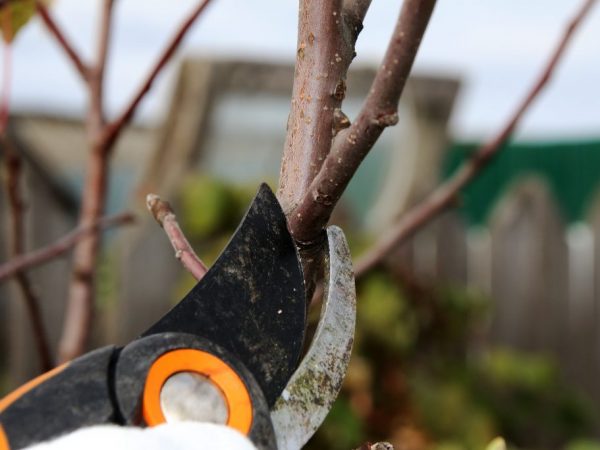Characteristics of the pear variety Extravaganza
Pear Extravaganza belongs to the winter tall varieties of fruit trees, has a good yield, is relatively resistant to diseases and does not require special care rules.

Characteristics of the pear variety Extravaganza
Characteristics of the variety
The described variety was bred for cultivation in the northern regions, therefore it is distinguished by its high winter hardiness and resistance to low temperatures. But even with such properties, the tree does not tolerate prolonged drafts.
The variety feels great in open sunny areas with sod-podzolic and chernozem soils, does not tolerate high groundwater.
The tree begins to bloom like an ordinary pear - in the first decade of May. The period of fruit ripening and harvesting falls on the third decade of September and the first decade of October. Abundant fruiting begins at 3-4 years of growth. For best results, the plant needs annual pruning and feeding.
Description of the tree
According to the description, the Enchanting pear tree is tall, reaches 5.5-6 m, has a large spreading crown and a high density of green mass. The plant reaches full maturity by 6 years old, is famous for large, green-yellow fruits with a pink barrel.
Description of the fetus
The pear of this variety has large fruits weighing more than 150 g.
The color scheme ranges from green-yellow to green-crimson. The fruits have a pear-shaped, round, regular shape and a smooth skin with a waxy coating. The structure of the fruit is medium-dense, without granulation. The pulp is very juicy, sugar-sweet in taste, without astringency, with a slight sourness. Pears differ in storage duration. The average period is 3-4 months until the onset of spring, but proper conditions should be created.
The fruits are suitable for fresh consumption, as well as for the preparation of various types of preserves and sweet dishes. They make candied fruits and marmalade, wonderful in taste.
Care
Saplings take root best in early spring or autumn planting. A well-formed plant with a clearly defined central process and at least 5-6 skeletal branches should be chosen. The trunk should be flat, straight and smooth, without cracks in the bark and branches. The place of the rootstock is well-healed, without growths and neoplasms. The root system is powerful, with a strong central conductor.
Landing
When planting, it is necessary to dig a hole of sufficient depth and width so that the roots can easily fit inside. It is approximately 60 cm wide and 80 cm deep. Compost is placed at the bottom of the planting pit and water is poured. The seedling is placed inside the pit along with a support peg, which subsequently serves as a supporting function for the young plant. This helps to avoid distortion or breakage of the barrel. Gardeners advise placing the tree stock to the east when planting.
The average rooting time of a seedling depends on the temperature regime and the amount of moisture.Although this variety is moisture-loving, it does not tolerate excess moisture well, therefore it is important when choosing a planting site to exclude areas with a close occurrence of groundwater.
In case of drought, stable watering should be ensured. A bucket of water once a week is enough for this. Watering should be done in the evening at a distance of about half a meter from the trunk.
Pruning

All damaged branches are removed
Obligatory annual pruning of branches. In February, remove all damaged branches and branches directed towards the inside of the tree. In case of untimely or incorrect pruning, the crown thickens, which subsequently leads to crushing of the fruits.
Top dressing
The introduction of nitrogen, potash, phosphorus, as well as complex fertilizers, according to their description, increases the quantity and quality of fruits. Organic fertilizers can also be used: compost, manure, etc.
Loosening the soil and mulching the soil 2 times a year in spring and autumn will not be superfluous in the care.
Diseases
The pear variety Fairy is relatively resistant to diseases affecting fruit crops. There are 4 types of diseases, for the appearance of which you should be prepared:
- scab;
- spotting;
- rust;
- powdery mildew.
To prevent diseases, the tree should be processed in a timely manner. Good results are obtained three times treatment with 1% Bordeaux mixture, starting with the appearance of greenery and until the end of flowering. Late autumn spraying with fungicides is also mandatory after leaf shedding. Fallen leaves must be burned. During active growth, spraying is carried out as needed.
Pests
Of the main pests of pears, Extravaganza are distinguished:
- copperheads;
- moth;
- gall mites;
- fruit gall midges;
- aphids.
The first protection is carried out even before the start of sap flow to destroy wintering pests. To do this, 700 g of urea is dissolved in 10 liters of water, the resulting solution is sprayed on the branches and soil under the trees.
In the future, successful pest control consists in an instant response to their appearance and the use of insecticides of a chemical or organic composition.
Conclusion
Of the advantages of this variety, they note unpretentiousness in care and high taste, the size of the fruits and the duration of their storage, complex resistance to diseases. The disadvantages are the height of the trunk and the shrinking of the fruits with untimely pruning of the crown.


